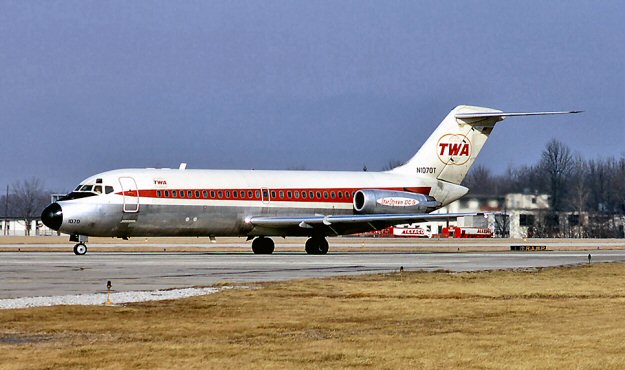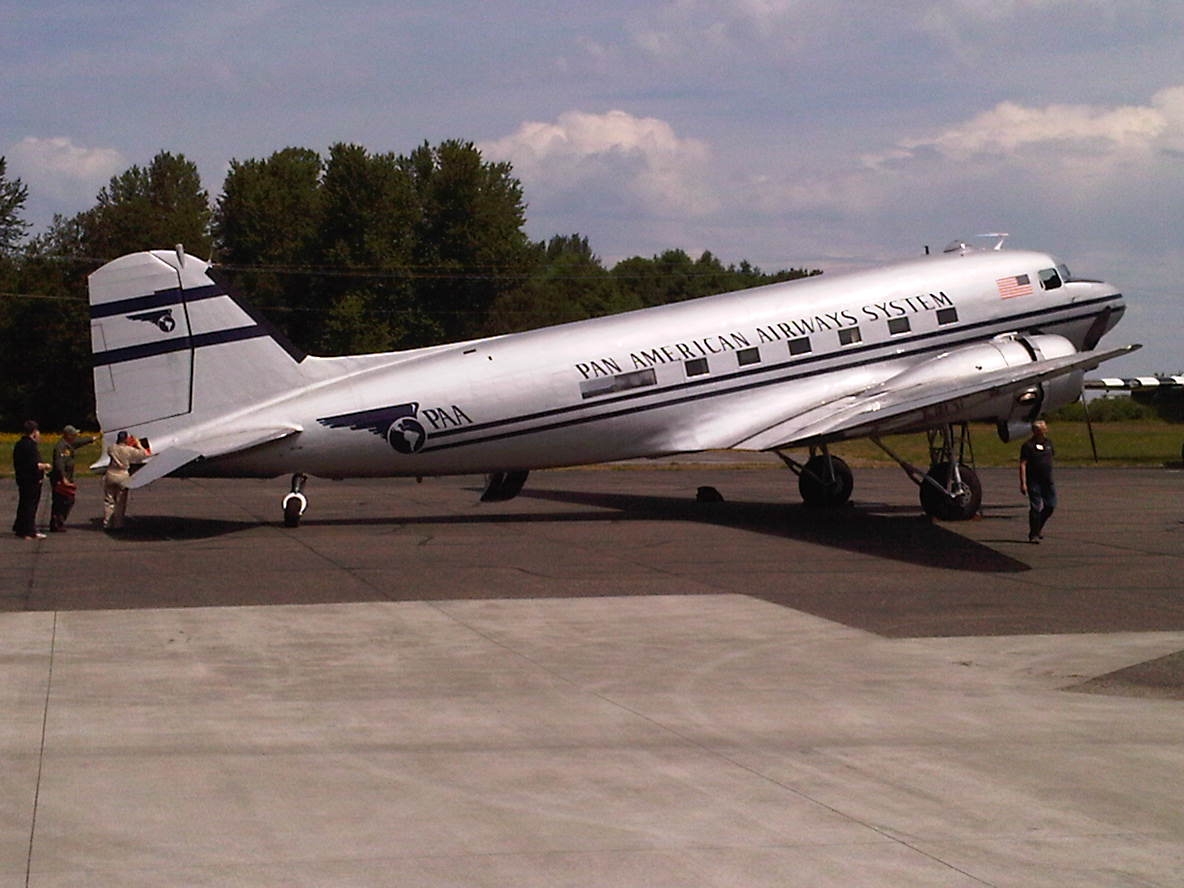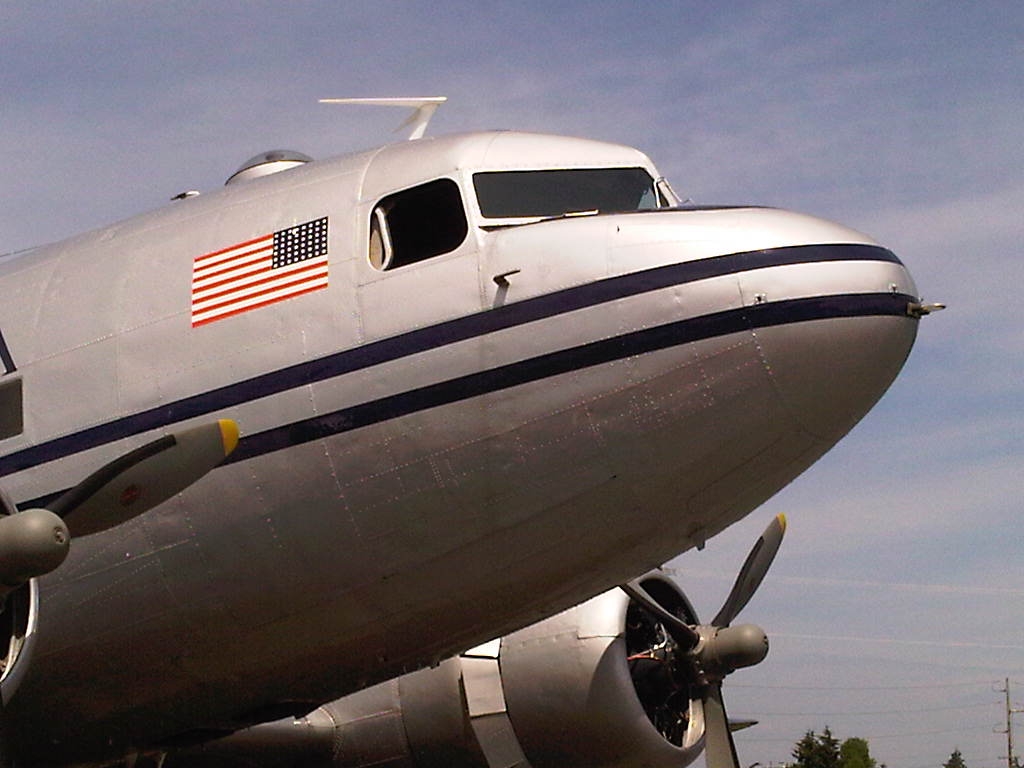Leeham News and Analysis
There's more to real news than a news release.
Odds and Ends: Gooney Bird; UAV helicopter
Gooney Bird: Britain’s The Economist has an interesting look back at The Gooney Bird, one of the affectionate names of the Douglas DC-3.
Any aviation enthusiast knows the DC-3 has a unique place in history, a description that is often over-used but which is true in this case. The feats, particularly during World War II, are legendary. The plane has been withdrawn from service in all of Europe (the article explains why) but remains in operation elsewhere in the world, including here in the United States.
After WW II, Douglas tried to breath new life into the airplane, creating the Super DC-3, with a square tail, wheel covers, a small fuselage stretch and more powerful engines. Capital Airlines bought a small number (three, if memory serves) but with cheap, surplus DC-3s left over from the War and modern competitors in the form of the Convair 240 and Martin 202, airline sales were a bust. The Navy bought a fair number.
Unmanned Helicopter: Sikorsky has entered the unmanned helicopter business to provide the military with heavy lift capability at no risk to the troops.
Odds and Ends: Looking ahead in 2014; Boeing letter to Machinists; TWA retro choice; Screw it, let’s do it on Virgin [plane]
Looking ahead in 2014: We wrote this outlook for 2014 for CNN International Travel. More seats, more fees, quieter year.
IAM 751 members vote Friday on the ‘777X contract.‘ Here is a letter dated December 27 from Boeing to the Machinists making the case to vote for the contract.
It is the TWA Twin Globe livery that is the clear choice by our Readers for American Airlines to select for a retro livery.

Source: Photobucket.com. Convair 880
TWA’s last livery was a distant second. (We didn’t particularly like this design.) The design should probably go on an MD-80, the derivative of the DC-9 on which the Twin Globes livery appeared.

Source: Ed Coats Collection. Douglas DC-9-15.
Which TWA livery should join American Airlines’ fleet as the “heritage” airplane?
| Answer | Votes | Percent | |
|---|---|---|---|
| Boeing 707 Twin Globes Livery | 944 | 53% | |
| Final Blue/Red/Gold Livery shown on Boeing 757 | 427 | 24% | |
| Red Stripe, Solid Tail Livery shown on Boeing 747 | 165 | 9% | |
| 1950s Livery seen on Lockheed Constellation | 158 | 9% | |
| Boeing 707 Delivery Livery (no Twin Globes) | 56 | 3% | |
| Reverse Red livery shown on McDonnell Douglas MD-80 | 23 | 1% |
In other news and irreverence:
- We’re chuckling at this one: The slogan “Screw it, let’s do it” is on a Virgin [airplane, that is]. Check out this story on CNN International Travel.
- Readers know we like going to the polar regions–we’ve been to Alaska’s Arctic Circle and to 80 degrees north in Svalbard. But this is not something we care to endure.
- Today is the last day to vote in our polls concerning the IAM-Boeing ‘777X Contract.’ We’ll post the results before the machinists begin voting on Friday.
- Aspire Aviation has a long profile on the 777X here.
Ultra Long Range Airplane market will limit 777-8 sales
A limited global market for Ultra Long Range Airplanes (ULRA) will limit sales of the Boeing 777-8.
The Boeing Board of Directors is expected to green-light the 777X program this month, with two versions of the airplane: the 350-passenger 777-8 and the 406-passenger 777-9. The 777-8 will have a range of about 9,400nm and the -9 a range about 1,000nm less.
The 777-8, an Ultra-Long Range Aircraft, is known within the industry as “Tim Clark’s airplane.” Clark is the president of Emirates Airlines and for years has been urging Airbus and Boeing to develop a plane with ultra-long range that can fly from Dubai to Los Angeles with a full payload. The absence of this ability is one reason why he has not purchased the 747-8I.
Reaction to the 777-8X in customer meetings sponsored by Boeing has been tepid. The 777-8X has been viewed as a niche airplane that will not compete effectively against the Airbus A350-1000, which nominally carriers 350 passengers but has a range of about 8,400nm.
Customer reaction, we are told by some of those in attendance at these meetings, has been that the 8X is a highly niche aircraft that will be needed on only 5% of the world’s routes. It will be too heavy and too costly for most operations, and uncompetitive with the A350-1000.
China’s closed airspace hasn’t changed much in 20 years
China’s military continues to so control–and close airspace–in China that delays are rampant, this AP story reports. We’re reminded on the era when we were doing business in China, going there nine times in a 4 1/2 year period from December 1988-mid 1993.
Visiting a number of airlines there, one of which was operated by the military, along with CAAC, CASC and the McDonnell Douglas Shanghai factory, we were struck by the low aircraft utilization: only six or seven hours. Western standards were 10 or more. Even then, we were told, the military control of the skies was a key factor. The low utilization rate then clearly contributed to the need to buy more airplanes to meet traffic growth than was necessary. We haven’t seen any data on today’s utilization rate, but we have to believe this nexus remains.
Flying Chinese carriers then was pretty alarming at times. A ramp worker smoked while refueling a plane, with the refueling connection spraying fuel on the ramp. Carry-on baggage was in the aisle on take off. A person was in the lav on take off. We’ve read some stories in recent years that suggest not much has changed.
Back then, getting into China had limited options. We flew to Tokyo and pretty much had to take Air China into Beijing. A direct air route would go over Korea. We couldn’t go through North Korean air space and apparently flying over South Korean to China was then forbidden, so we had to route south around the Korean peninsula, adding a great deal of time to the flight.
The McDonnell Douglas Shanghai factory was primitive even by standards of the day then, well before robotics and moving production lines. The factory was producing one MD-80 a month and the planes were essentially hand-built. This antecedent might be why the MD-80-looking ARJ21 is having such difficulty. The factory drew so much power that parts of Shanghai went brown-out or black-out during the day, an issue presumably long-since overcome in the Shanghai power grid.
The MD-80 plant was supposed to be MDC’s “in” to gain market share. While selling something like 40 MD-80s/90s (if memory serves) to China via this plant, the venture clearly was a failure and the Chinese used the operation to learn a bit about commercial aviation. Embraer had an ERJ plant in China for the same purpose, and likewise came up short of its goal while the Chinese benefited more. The Airbus plant in Tianjin seems to have been more successful, but we don’t think it’s coincidence that the COMAC C919 looks a lot like the A320.
Not from the Paris Air Show: Move Over; riding in a DC-3
In a week dominated by Paris Air Show news, we have a couple of unrelated items.
We saw this car in a parking lot and couldn’t resist taking a picture. Note the writing on the windshield and how it would be legible in your review mirror as the car comes up behind you.
And then back to aviation, we took a ride in the ex-Pan Am DC-3 over the weekend. It’s owned by the Historic Flight Foundation in Everett (WA).
Photo by Scott Hamilton
Photo by Scott Hamilton





